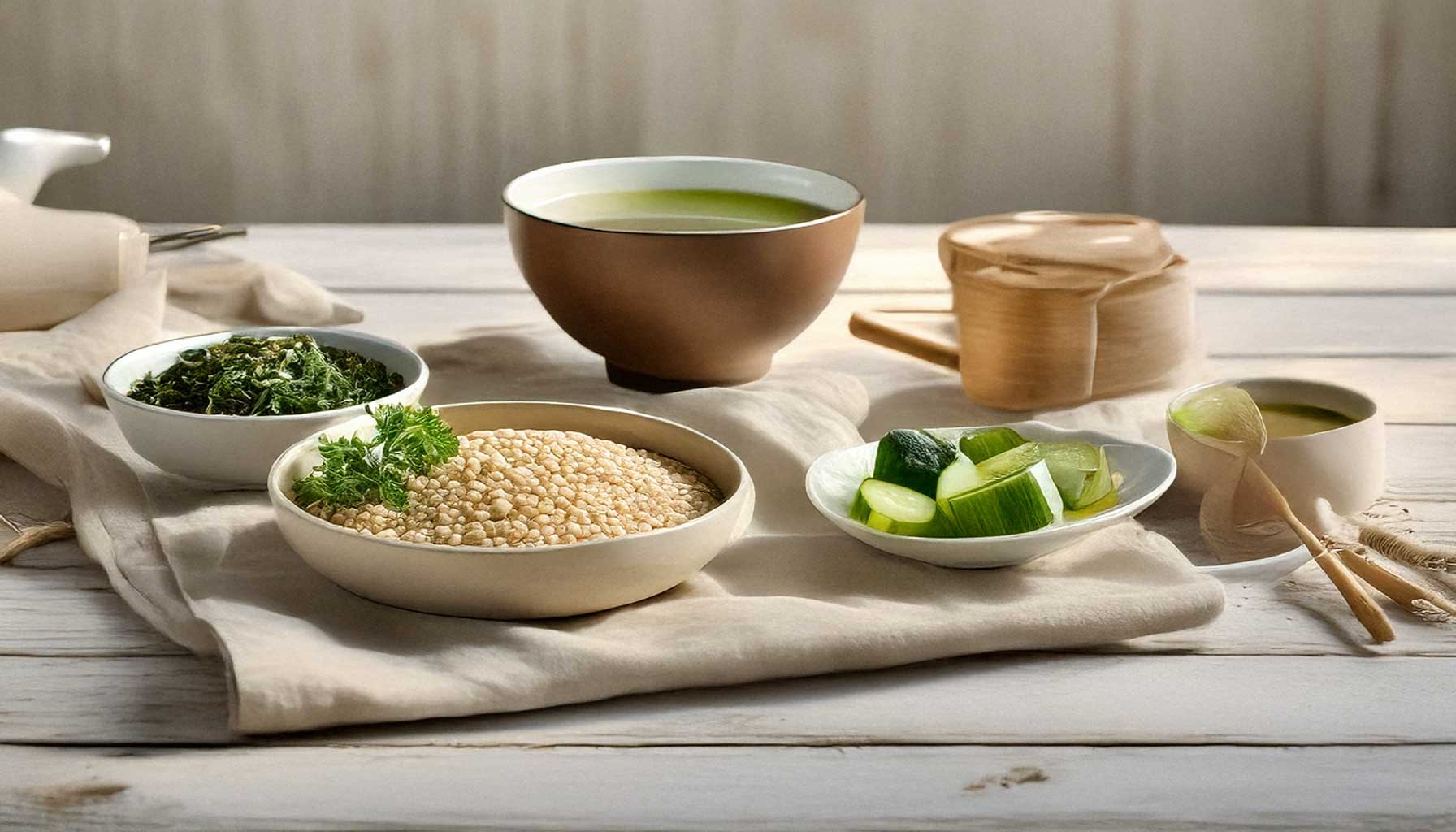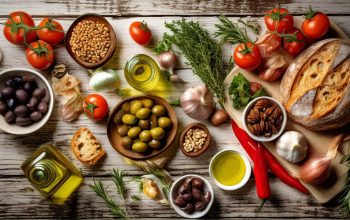Eating well doesn’t have to be complicated. With macrobiotic eating, you embrace a balanced, mindful approach to food that nourishes both body and soul. Rooted in the principles of harmony with nature, this lifestyle focuses on whole grains, vegetables, and simple, natural meals. Whether you’re a seasoned foodie or a complete beginner, this guide will walk you through the essentials of macrobiotic eating and its profound benefits for your well-being.
What is Macrobiotic Eating?
A Holistic Approach to Nutrition
Macrobiotic eating isn’t just about food—it’s a way of life. The term “macrobiotic” comes from the Greek words for “long life” and “way of living.” By focusing on natural, unprocessed ingredients and mindful eating, this approach aims to create balance within and align with the seasons and the environment around us.
Core Principles
The foundation of macrobiotic eating is surprisingly simple:
- Whole, unrefined grains as a staple (e.g., brown rice, barley).
- Seasonal vegetables for variety and nourishment.
- Plant-based proteins such as beans, tofu, and tempeh.
- Avoidance of heavily processed foods, artificial additives, and refined sugar.
- Cooking methods that preserve nutrients and energy, like steaming or boiling.
“Health is not just what you eat; it’s how you eat. By eating mindfully, you nurture both your body and spirit.”
Did You Know?
Macrobiotic eating has roots in Japanese Zen Buddhism and has been practiced for centuries to promote longevity and spiritual well-being.
Benefits of Macrobiotic Eating
1. Enhanced Digestion
By focusing on whole, unprocessed foods and chewing slowly, macrobiotic meals are gentle on the digestive system. The inclusion of fermented foods like miso or pickled vegetables further supports gut health.
2. Natural Weight Management
With its emphasis on plant-based and nutrient-dense meals, macrobiotic eating helps maintain a healthy weight naturally. The absence of processed junk food means fewer empty calories and more satiety.
3. Balanced Energy
The focus on slow-digesting grains and vegetables provides steady energy throughout the day. Say goodbye to sugar crashes and caffeine dependency!
| Benefit | Why It Works | Examples |
|---|---|---|
| Improved Digestion | Whole grains and fiber-rich foods promote gut health. | Brown rice, seaweed, miso soup |
| Steady Energy Levels | Complex carbohydrates release energy slowly. | Barley, millet, sweet potatoes |
| Reduced Inflammation | Avoidance of processed and sugary foods lowers inflammation. | Green tea, leafy greens, ginger |
Getting Started with Macrobiotic Eating
Step 1: Stock Your Pantry
Transitioning to macrobiotic eating starts with your pantry. Replace processed and sugary snacks with wholesome staples. Here’s a starter list to help you:
- Whole Grains: Brown rice, quinoa, millet, barley.
- Legumes: Lentils, chickpeas, adzuki beans.
- Vegetables: Leafy greens, root vegetables, squash.
- Fermented Foods: Miso, sauerkraut, tempeh.
- Sea Vegetables: Nori, kombu, wakame.
“Your pantry sets the foundation for a healthier you. Make it vibrant with natural, seasonal ingredients.”

Step 2: Cook Simply
Macrobiotic meals don’t require hours in the kitchen. In fact, simplicity is key. Steam or lightly sauté vegetables to retain their natural flavors and nutrients. Pair them with a serving of whole grains and a side of fermented foods for a complete, balanced plate.
Step 3: Embrace Mindful Eating
Take the time to enjoy your meals. Chew thoroughly, savor the textures and flavors, and eat until you feel content—not stuffed. This practice not only aids digestion but also cultivates gratitude for the food you consume.
Pro Tip
When shopping, focus on local, organic produce to align with macrobiotic principles of eating seasonal and environmentally friendly foods.
Sample Day of Macrobiotic Meals
Curious about what a day of macrobiotic eating might look like? Here’s a simple, delicious plan:
Breakfast
Miso Soup with Wakame and Brown Rice
Start your day with this soothing, nourishing soup. It’s light yet packed with essential nutrients.
Lunch
Steamed Vegetables with Tahini Dressing
A vibrant mix of seasonal greens, carrots, and zucchini topped with a creamy tahini drizzle.
Dinner
Barley and Adzuki Bean Stew
This hearty stew is perfect for colder evenings, offering warmth and sustained energy.
Snacks
Roasted Seaweed or Fresh Fruit
Choose simple, clean snacks to keep your energy up without derailing your macrobiotic goals.

Macrobiotic Lifestyle Tips
Listen to Your Body
One of the key principles of macrobiotic eating is tuning in to your body’s needs. Pay attention to how different foods make you feel. For example, heavier grains like barley might be ideal for winter, while lighter options like quinoa can be refreshing in summer.
Seasonal Adjustments
As the seasons change, so should your diet. Incorporate warming foods like soups and root vegetables in the winter, and lighter, cooling meals like cucumber salads and steamed greens in the summer.
“Food is a reflection of the seasons. By aligning your meals with nature, you bring harmony into your daily life.”
Fun Fact
The macrobiotic lifestyle extends beyond food. It encourages physical activity, gratitude practices, and creating a calm, clutter-free environment at home.
Hydration Matters
Macrobiotic principles advocate for natural, clean hydration. Drink water or herbal teas, avoiding sugary or heavily processed beverages. Green tea is a popular choice for its antioxidant properties.

Common Misconceptions
Despite its benefits, macrobiotic eating is often misunderstood. Let’s clear up some myths:
Myth 1: It’s Too Restrictive
While macrobiotic eating has guidelines, it isn’t about rigid rules. It’s about balance and listening to what your body needs.
Myth 2: It’s Only for Vegetarians
Although plant-based foods are emphasized, occasional fish and other animal proteins can be included, depending on personal preferences.
Myth 3: It’s Expensive
Many staples like grains and beans are affordable. Buying seasonal and local produce can also keep costs low.
| Myth | Fact |
|---|---|
| Macrobiotic is only rice and vegetables. | It includes a wide variety of grains, proteins, and condiments. |
| You need fancy, hard-to-find ingredients. | Most ingredients are common and available at regular grocery stores. |
| It’s too complicated to start. | It’s simple and adaptable to your lifestyle. |
Your Next Steps
Start Small
If the idea of overhauling your diet feels overwhelming, don’t worry. Begin with small changes, like swapping white rice for brown or adding more vegetables to your meals. Gradually, you can incorporate more macrobiotic principles into your lifestyle.
Experiment with Recipes
Explore different grains, vegetables, and cooking methods. Try simple macrobiotic dishes like miso soup, steamed greens with sesame dressing, or a hearty grain bowl topped with seasonal veggies.
Helpful Tip
Journaling your meals and how they make you feel can be a helpful way to stay mindful and track your progress.
Join a Community
Connecting with others who practice macrobiotic eating can provide inspiration and support. Look for online forums, local groups, or even macrobiotic cooking classes in your area.
Conclusion: A Balanced Path to Wellness
Macrobiotic eating is more than just a diet—it’s a holistic approach to life that fosters balance, mindfulness, and a deep connection to the natural world. By taking small steps toward this lifestyle, you can experience a profound transformation in your health and well-being.
“The journey to a healthier you begins with a single, mindful choice.”

What Do You Think?
Have you tried macrobiotic eating? What’s your favorite meal or tip? Share your thoughts in the comments below—I’d love to hear from you!


